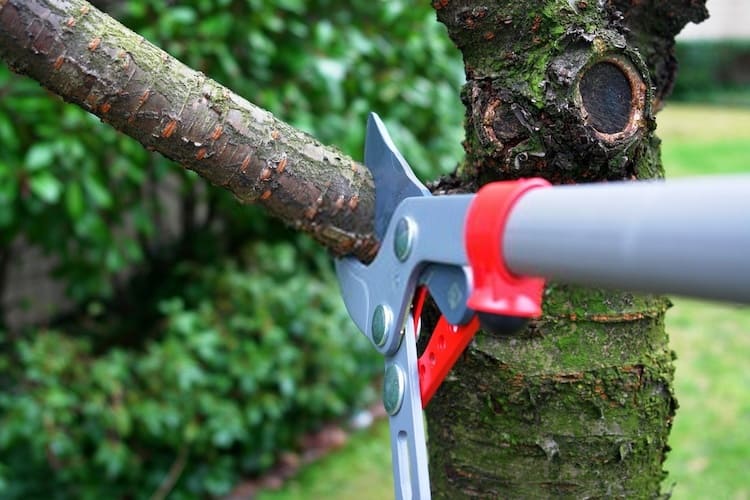If you desire a graceful lawn experience, invest in trees. Trees play an essential role in your outdoor landscape finishing, and they serve as ornamental borders and overall shades for sunny days.
What you might not know is that pruning refreshes trees and prepares them for a new growing season. But a hand pruner in hand awakens the gardener in you, and sometimes, you might not realize that you're actually pruning too much.
Have you ever over pruned your precious trees? Don’t feel bad, you were not wrong for pruning, but your approach was. However, help is here on how to fix an over pruned tree and tips to avoid it from happening again.
Table of Contents
How to Fix an Over Pruned Tree
When pruning trees, a general rule of thumb says, you should not prune lesser than 15 to 20 % of a tree’s covering at a go. Pruning must be done correctly to guarantee the health and vitality of your trees, and your pruning technique must be right; have that in check for next time.
Unfortunately, the loss caused by over-pruning your trees can’t be recovered, but luckily you can get help for your tree by following this step-by-step guide on how to fix an over pruned tree.
Know your plant
It is essential you know the type of plant you have. It matters because some trees can be pruned to the ground and will grow back just fine as though nothing happened.
This type of tree requires hard pruning to stay healthy and overgrown, and once such trees are overgrown, the typical mild pruning techniques won’t fix the problem. Hard pruning is extreme, but if done correctly, the result is usually brilliant for these sets of plants.
Hard pruning is a type of pruning that exempts some plants from the (15-20% rule). In hard pruning, you cut the tree off to a height of 6 to 12 inches (15 to 30.5 cm.) higher than the ground level and then allow it to regrow.
Not all trees can tolerate over-pruning, some of the plants that tolerate and responds well to over-pruning include:
- Spirea
- Forsythia
- Dogwood
- Lilac
- Honeysuckle
- Weigela
- Potentilla
- Hydrangea
- Etc.
So, find out about your tree. If it falls within this category, there is no reason to panic, whereas others that can’t tolerate over-pruning may start to droop or die.
Be patient
Trees lose vital energy when over pruned. As a result of this damage and nutrient loss, trees need time to respond and get back the lost nutrient and energy.
As an over pruned tree tries to regain the energy, it begins to grow a collection of vertical, thin sprouts bearing the same looks as twigs but known as water sprouts, soon your treetop will be covered with them and its best you don’t interrupt them until they are established.
Patience is vital when fixing an over pruned tree and taking it back to its standard form. There is no quick remedy to right these wrong cuts, but with the right rejuvenating technique and a little patient soon, your tree will be as lively as it used to be.
If the case of your tree’s branches weren’t horrible, unhealthy, or weak, with time, they would be compelled to be able to start new growth. But, for now, you likely won’t see fresh blooms.
This unproductive phase may last for the first, even though the second year after an extensive over-pruning.
Provide Proper Fertilization
You can help supply your tree with an extra nutrient boost by providing adequate tree health care. Keep it fertilized by feeding it with plenty of nutrient-rich compost and mulch to prepare it better to produce when the time is right.
Mulching plays a vital role, especially if you want your tree to be its best while recovering, your tree will grow even more significant than it was. Also, if you want an extended life cycle because they help maintain the vitality of the trees and keep them healthy.
When you fertilize your trees, you compensate for the required soil nutrients and minerals and nutrients that were lost during pruning.
Ensure proper watering practices
Your trees are already struggling without its branches, so give it a helping hand. For this to happen, you need to tend to its needs throughout the seasons. Water it during dry seasons and immediately before winter.
Scorching dry seasons and soil conditions ordinarily put stress on healthy plants, more of recovering plants, to increase your beloved trees’ lifespan. Ensure to avoid overwatering.
The recommended watering practices for watering mature trees in 75-to 85- degree weather include slowly deep watering thoroughly every five to seven days during drought and every four to six days in 95- to 105-degree weather. Whereas deep watering slowly is recommended every three days for newly planted trees.
When confused about your tree’s watering requirements, use a soil moisture meter.
Wound dressing
The disadvantages of wound dressing outweigh the advantages. Hence, it is rarely recommended, with only a few exceptions, such as a tree that suffered from an oak wilt disease before pruning.
In this situation, the wound dressing can keep the plant safe by averting the penetration of harmful beetles from spreading the infection into recovering tissues of the tree.
Otherwise, it is better to leave wounds open. Scientists have now believed that dressing wounds slow the natural healing process in trees.
Generally, wound dressing is used only on flush cuts bigger than an inch in diameter.
Conclusion
The best advice on how to fix an over pruned tree is patient with these tested and trusted tips, and time is the only real cure for an over pruned tree, so when you decide to prune, do so carefully. Remove no lesser than 15 to 20 % of your tree’s covering at a go except for trees that can tolerate hard pruning.
Don’t make the same mistake twice. It takes a long time for your tree to look good again and more expensive to replace a whole tree when over pruned.






Leave a Reply